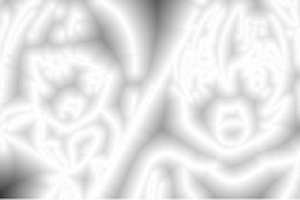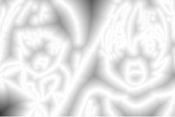Information
- Publication Type: Bachelor Thesis
- Workgroup(s)/Project(s):
- Date: December 2019
- Date (Start): June 2019
- Date (End): December 2019
- Matrikelnummer: 01633066
- First Supervisor:
Abstract
Image classification is one of the most common use cases of Convolutional Neural Networks. In this thesis, our goal is to increase the accuracy of a neural network classifier for frames of production ready 2D animations and to create a model from a dataset with high accuracy for classification. This can be seen as groundwork for future work that applies neural networks on production ready 2D animation data, by reusing and tweaking the model for different applications.We compare training a neural network with the color channels of images to training with grayscale images, predicted contours or distance fields generated from those contours. Furthermore, different combinations of the data will be used to evaluate the best option. This means that the comparison of the accuracy not only includes color data compared to color with contours and distance fields but every combination of the aforementioned four types of input.
Additional Files and Images
Weblinks
No further information available.BibTeX
@bachelorsthesis{wieser-2019-ani,
title = "Classification of Production Ready 2D Animation using
Contour and Distance Fields",
author = "Manuel Wieser",
year = "2019",
abstract = "Image classification is one of the most common use cases of
Convolutional Neural Networks. In this thesis, our goal is
to increase the accuracy of a neural network classifier for
frames of production ready 2D animations and to create a
model from a dataset with high accuracy for classification.
This can be seen as groundwork for future work that applies
neural networks on production ready 2D animation data, by
reusing and tweaking the model for different applications.
We compare training a neural network with the color channels
of images to training with grayscale images, predicted
contours or distance fields generated from those contours.
Furthermore, different combinations of the data will be used
to evaluate the best option. This means that the comparison
of the accuracy not only includes color data compared to
color with contours and distance fields but every
combination of the aforementioned four types of input.",
month = dec,
address = "Favoritenstrasse 9-11/E193-02, A-1040 Vienna, Austria",
school = "Research Unit of Computer Graphics, Institute of Visual
Computing and Human-Centered Technology, Faculty of
Informatics, TU Wien ",
URL = "https://www.cg.tuwien.ac.at/research/publications/2019/wieser-2019-ani/",
}


